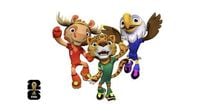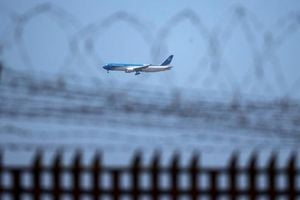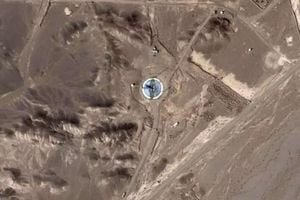FIFA has officially pulled back the curtain on the trio of mascots set to represent the historic 2026 FIFA World Cup in North America. In a much-anticipated announcement made on September 26, 2025, the world’s football governing body introduced Maple, Zayu, and Clutch—three vibrant characters symbolizing the tournament’s co-hosting nations: Canada, Mexico, and the United States. This unveiling marks yet another milestone as the countdown to the first-ever World Cup jointly hosted by three countries gathers pace.
The atmosphere was electric as FIFA’s official ceremony, streamed globally, showcased the mascots for the first time. Each mascot is not just a playful figure but a carefully crafted ambassador, embodying the unique spirit, wildlife, and culture of its nation. Maple, Zayu, and Clutch are more than just faces for the tournament—they’re a celebration of North American unity and diversity, set to inspire millions of fans around the world.
Let’s meet the trio. Maple, representing Canada, is a beaver—an animal deeply woven into the Canadian identity. Dressed in a striking red uniform, Maple is described by FIFA as a goalkeeper with legendary shot-stopping skills and strong leadership qualities. But there’s more to Maple than football prowess; this mascot is also an artist and music lover, known for a passion for street style. According to FIFA, "Maple is a goalkeeper with legendary saves and strong leadership, an artist and music fan who loves street style." It’s a nod to Canada’s creative energy and multicultural vibrancy.
Next up is Zayu, the jaguar character symbolizing Mexico. Donning a vivid green kit, Zayu hails from the southern jungles of Mexico and is depicted as a creative and agile striker, whose flair on the pitch is matched only by a love for dance and food off it. Zayu’s role extends beyond scoring goals—this mascot is a cultural ambassador, eager to share the richness of Mexican traditions with the world. As FIFA put it, "Zayu is a creative and agile striker from the southern jungles of Mexico, an ambassador for Mexican culture through dance and cuisine." The jaguar’s presence serves as a reminder of Mexico’s ancient heritage and its enduring love affair with football.
Completing the trio is Clutch, the American bald eagle. Sporting a blue uniform, Clutch stands as a symbol of adventure and unity, playing the role of a midfielder who brings teammates together. The bald eagle, a national icon of the United States, perfectly encapsulates the boldness and ambition that the hosts hope to bring to the world’s biggest football stage. FIFA described Clutch as "an adventurous midfielder who unites teammates, embodying the spirit of the United States." With Clutch leading the charge, the U.S. is ready to showcase its passion for the beautiful game.
The mascots were not chosen by chance. FIFA emphasized that Maple, Zayu, and Clutch emerged from a global competition, reflecting input from fans and artists worldwide. This collaborative process underscores the inclusive ethos of the 2026 World Cup, which aims to break new ground in both scale and spirit. For the first time ever, the tournament will expand to 48 participating nations, up from the previous 32, and will be staged in 16 cities across the United States, Canada, and Mexico.
The expansion of the World Cup is a game-changer. Not only does it mean more teams and more matches, but it also promises to bring the excitement of football to new corners of North America. The tournament will kick off on June 11, 2026, transforming cities from Vancouver to Mexico City and New York into epicenters of global sport. It’s a logistical and cultural feat, one that FIFA hopes will set a new standard for international collaboration in sports.
But there’s another twist that’s sure to delight younger fans. For the first time, the mascots will be playable characters in an official FIFA-licensed video game. FIFA announced the upcoming release of 'FIFA Heroes,' a new game set to debut in 2026, where players can interact with Maple, Zayu, and Clutch on the virtual pitch. The organization explained, "To connect with younger fans, Maple, Zayu, and Clutch will be the first mascots ever to be playable in a FIFA game. They will appear in the new FIFA Heroes game launching next year." It’s a bold move to bridge the worlds of football, gaming, and youth culture, ensuring the mascots become household names long before the first whistle blows.
The unveiling of the mascots has already sparked conversation among fans and pundits alike. Some have praised the choice of animals for their cultural significance and visual appeal, while others are keen to see how these characters will be woven into the broader narrative of the tournament. The decision to feature the mascots in a video game is being hailed as a savvy step toward engaging a new generation of supporters, many of whom experience football as much through screens as in stadiums.
This World Cup is not just about football—it’s about forging connections. The mascots, in their playful yet meaningful designs, reflect the values of friendship, creativity, and unity that FIFA hopes to promote throughout the tournament. As the world looks ahead to June 2026, the stage is being set for a festival of sport and culture unlike any before. The eyes of the footballing world will be on North America, and Maple, Zayu, and Clutch will be leading the charge.
With the official mascots now revealed, anticipation for the 2026 FIFA World Cup has reached a new high. Fans can look forward to seeing Maple, Zayu, and Clutch not only on the pitch but also in digital spaces, merchandise, and promotional events leading up to the tournament. As the first jointly hosted World Cup in history, and with a record number of teams participating, this edition is poised to be a landmark for both football and international cooperation.
For now, the mascots stand as colorful symbols of what’s to come—a celebration of unity, diversity, and the universal love of the game. With preparations well underway and excitement building across three nations, the 2026 FIFA World Cup promises to be a spectacle for the ages. The world will be watching as North America prepares to welcome football’s greatest show—and its newest mascots—next summer.




